Places with high growth potential (GP) all year long
Randy from Bulgaria sent me this interesting question, which I paraphrase here:
I was wondering is there a place on earth, where growth potential (GP) is above 90% for cool-season grass, or also a place where GP is above 90% for warm-season grass, all year long?
I replied that there aren’t many places like this for cool-season grass, but they exist if one looks carefully. I should qualify that, however. The 90% criterion for GP is a bit high. That would require that the temperature be plus or minus 2.5 °C from the optimum temperature every day. That’s a stringent criterion, and to make it easier I drop the GP threshold to 0.75 (75%) for this exercise.
I also added that in tropical locations near the equator and close to sea level, this is basically the GP that one gets for warm-season grasses.
It’s a bit trickier for cool-season grass. In most places, the temperature varies. These places have winter, when the temperatures are almost certainly too cold for cool-season GP to be above 0.75. And if we happen to be in a place where winter is still warm enough for near optimum GP for cool-season grass, then we are in a pretty hot place—summer will have temperatures that are much higher than optimum for cool-season grass, causing cool-season GP to plummet in summer.
Let’s look at a few typical places. Here’s Rome. When calculating the GP for cool-season grass for every day, based on the three year average for 2020, 2021, and 2022, there are 103 days with cool-season GP greater than or equal to 0.75. It’s too cold in the winter, too hot in the summer, and just right for cool-season grass to have high GP in spring and autumn.
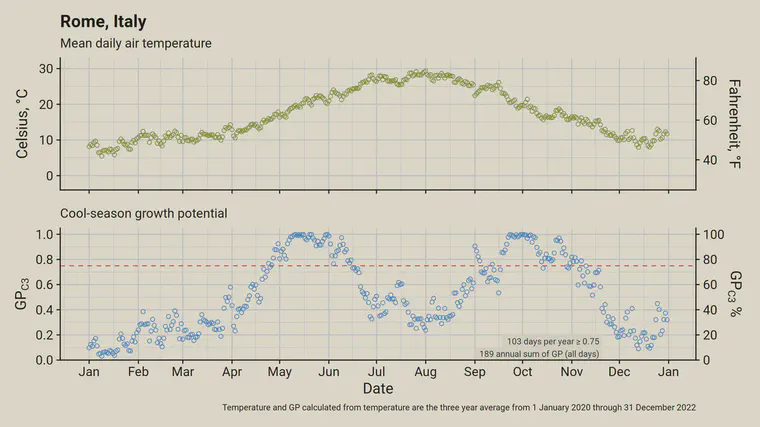
We are looking for a place with 365 days. How about Shanghai?
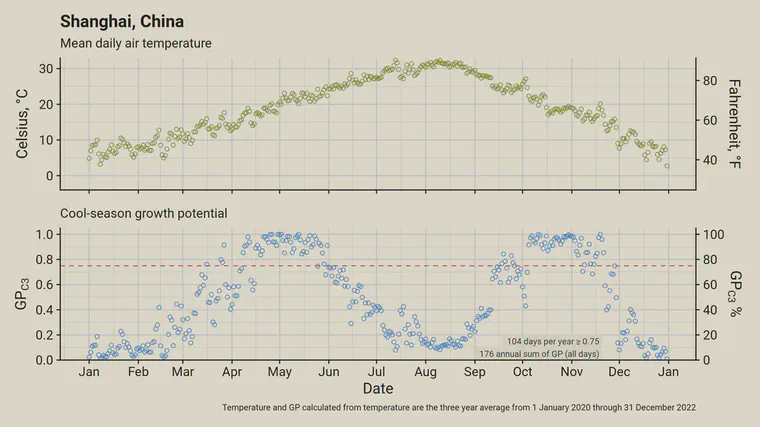
Shanghai has 104 days. It’s way too hot in summer and way too cold in winter. The cool-season GP drops to almost 0 in winter and in summer.
New York will be too cold in the winter, and too hot in the summer, but let’s see what that location looks like.
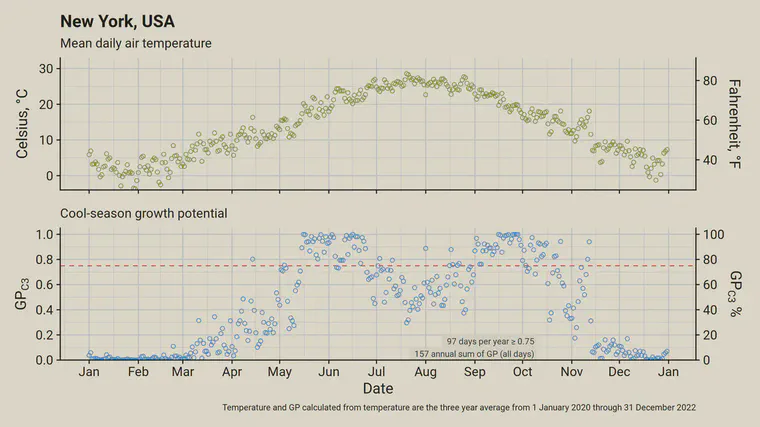
New York has 97 days with cool-season GP above 0.75. The winter is too long. We are a long ways away from a location with 365 days of good cool-season GP.
Sydney is promising. Sydney has a lot of days with good temperatures for cool-season GP.
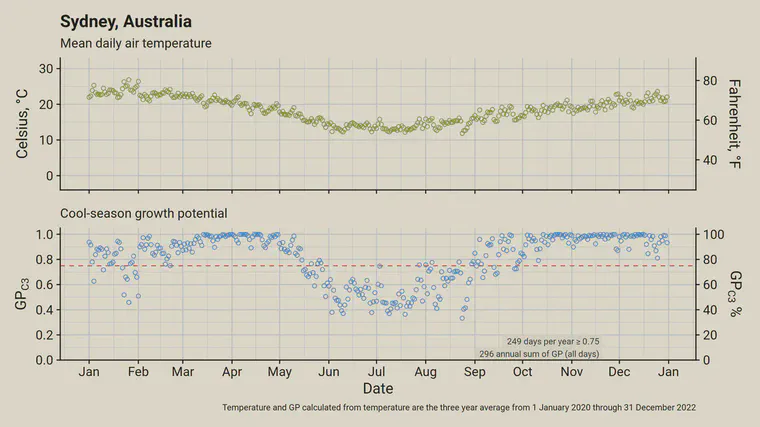
That’s still only 249 days per year at Sydney. What would we need to get more consistent temperature through the year? We’d need to get close to the equator, if possible, although for our pursuit of cool-season GP the high temperatures near the equator will be problematic. Or perhaps we could get to an island location, where ocean currents and proximity to the ocean may keep the temperatures moderated through the year.
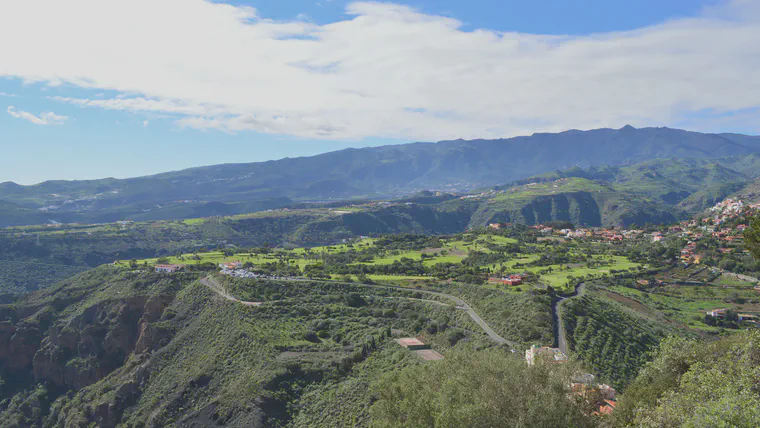
One place to look is the Canary Islands. At Bandama, we can get 316 days per year at or above 0.75. There is still enough seasonality at this latitude that the cool-season GP is dropping below 0.75 on some days in the winter season and it is hot enough in the summer that the cool-season GP is dropping a little below 1.
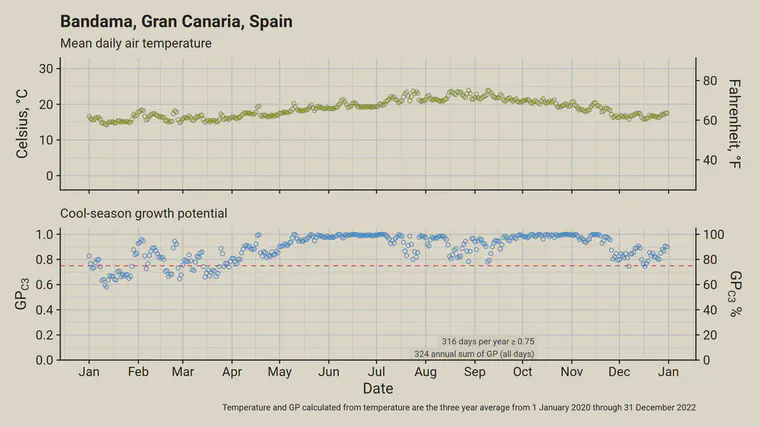
Bandama is pretty good, however, and one presumes that at similar elevations on other nearby islands, one could get 300+ days in a year with a nice cool-season GP.
By now, you may be noticing that as we get to places like Sydney and Bandama that have a high number of days with a cool-season GP above 0.75, there is a lot of warm-season grass used. In Sydney, sure there are creeping bentgrass greens, but through the green one typically finds kikuyugrass or Cynodon and even a bit of Zoysia or Stenotaphrum. At Bandama, there’s a lot of Pennisetum.
Let’s keep that in mind, and continue. In fact, let’s go straight to the home of Pennisetum clandestinum, Kenya. And if we look at weather data for the location of Nakuru Golf Club, we get what we’ve been looking for—365 days in a year with a cool-season GP at or above 0.75.
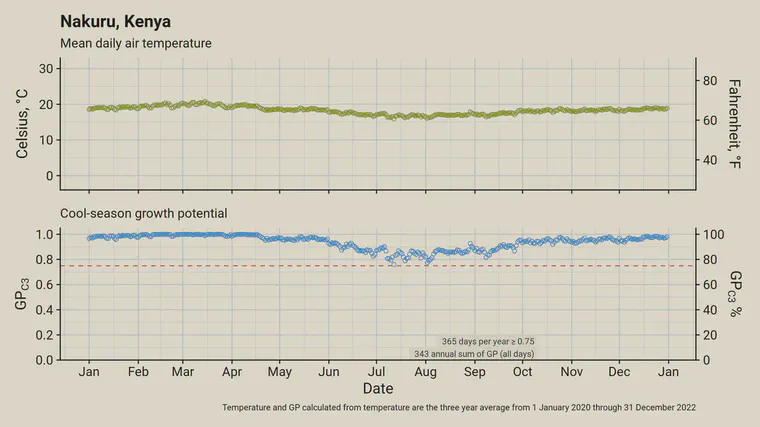
So it is possible. There are places in the world with temperatures like this. Although this means that cool-season grasses can grow at such a location, simply having a high growth potential all through the year does not mean that cool-season grasses will dominate the grasslands or the lawns or managed turf of the area. That’s because warm-season (C4) grasses can also grow pretty well when the temperatures are high enough for cool-season grasses to have a high GP. And those C4 grasses are more efficient in nitrogen, water, and light use than are cool-season grasses.
Therefore, anywhere in the world that is warm enough for year-round “ideal” GP for cool-season grasses will tend to be dominated by swards of warm-season grasses, although one will often find cool-season grasses used in small areas and for specific purposes (such as golf course putting greens).
We can get to places near the equator that are too cold, too!
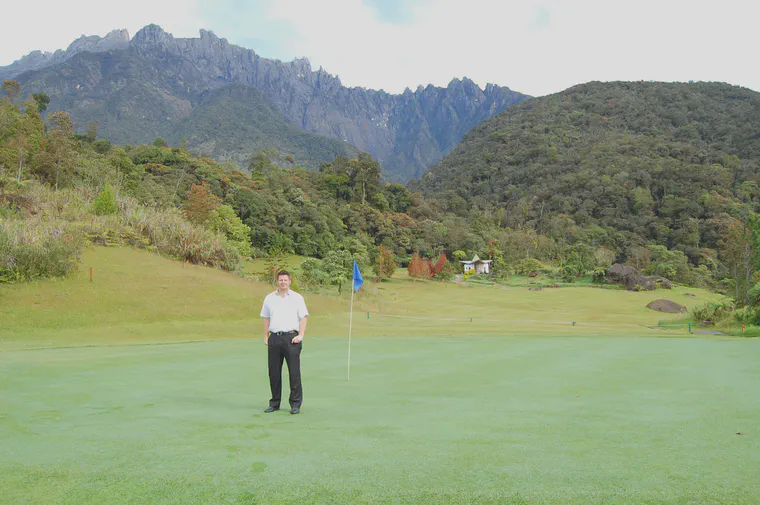
At Mt. Kinabalu GC, there are only 15 days in the year with cool-season GP greater than or equal to 0.75. At only 6 degrees north of the equator, one might expect that low number to be because of high temperatures. But it’s the opposite. Mt. Kinabalu GC is at such a high elevation that the temperatures are too low to reach a GP of 1.
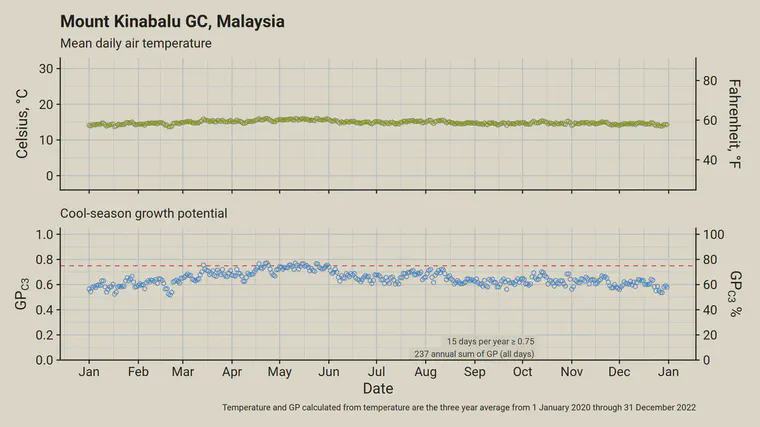
Nuwara Eliya in Sri Lanka is another high elevation location near the equator—a hill station—that does pretty well, reaching 176 days with cool-season GP of 0.75 or above.
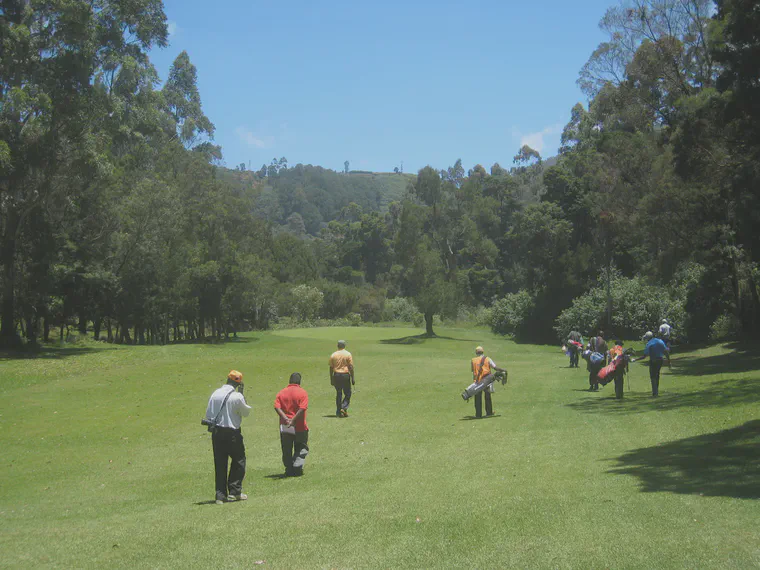
Nuwara Eliya is just a little too high, and a little too cool, to reach the arbitrary 0.75 threshold on all the days of the year. At Nuwara Eliya, there’s a lot of Axonopus and a lot of Digitaria didactyla, both C4 grasses.
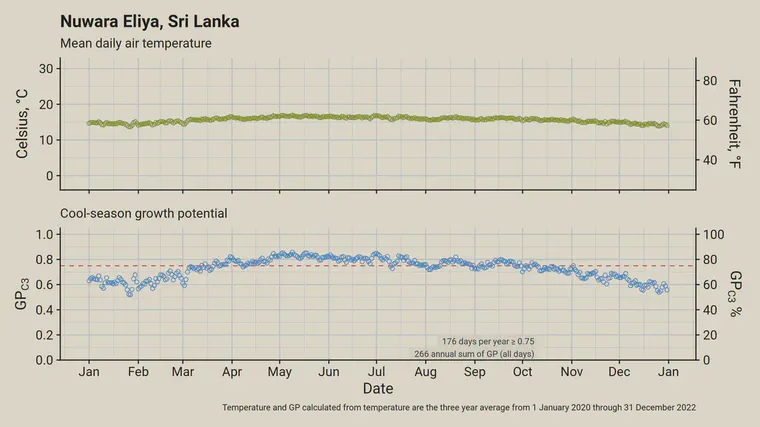
Along the road from Kandy to Nuwara Eliya, one passes through Ramboda. And there we have another location with 365 days in the year with GP close to an optimum for cool-season grass.
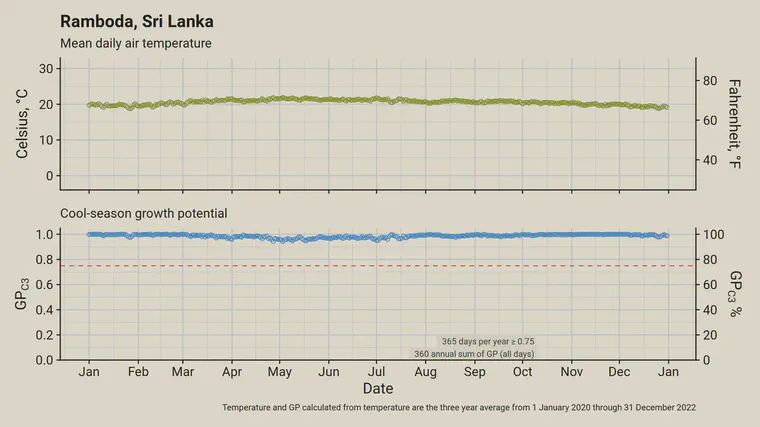
In India one can go to the hill station of Kodaikanal and again get so high that the GP dips below 0.75 in the coldest months of the year.
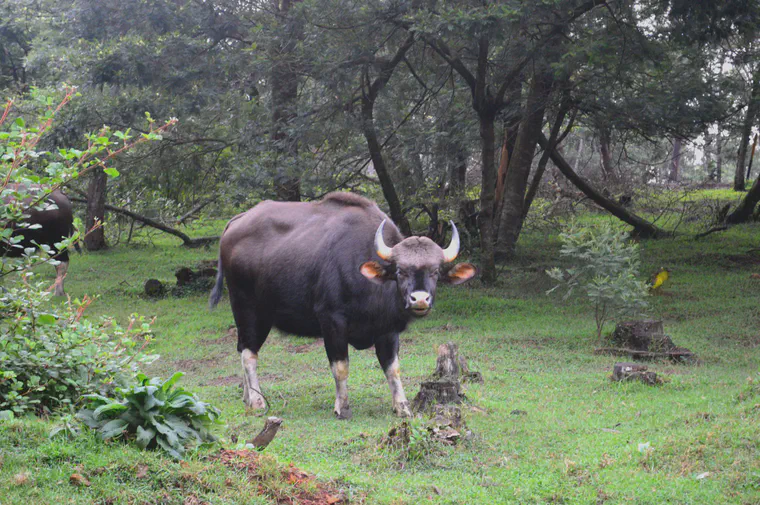
As one drives up the winding road to Kodaikanal, there is a noticeable point at about 1,500 meter elevation at which kikuyugrass starts to appear beside the road. On the plains below, I noticed only Cynodon.
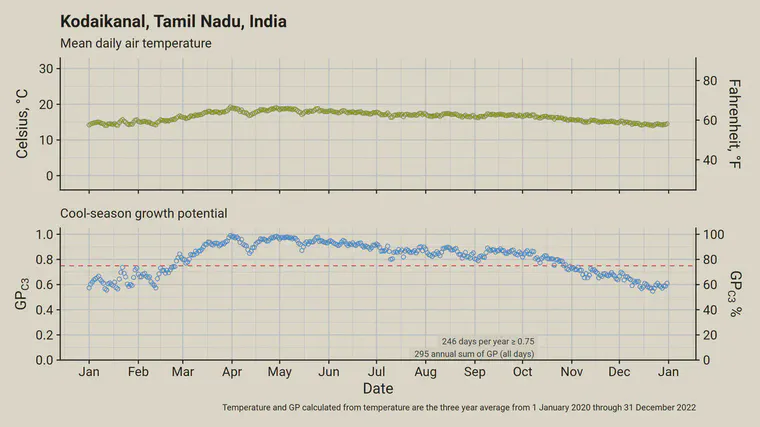
Another hill station with high cool-season GP is Baguio.
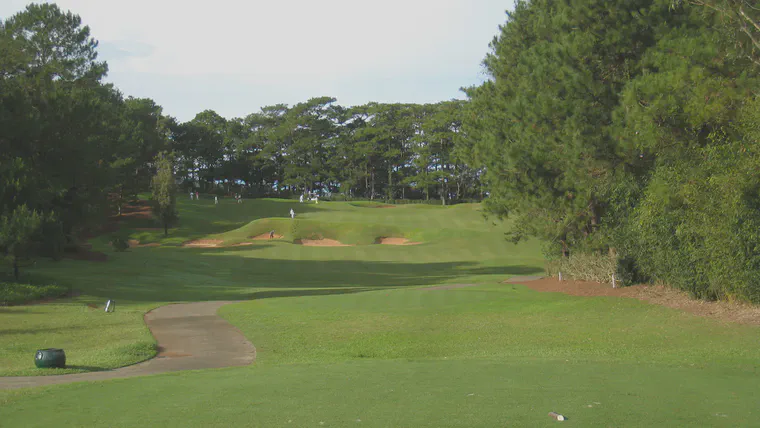
At Baguio, the three year average data gives us a tantalizing 364 days in the year with a cool-season GP greater than 0.75. That’s notably clement.
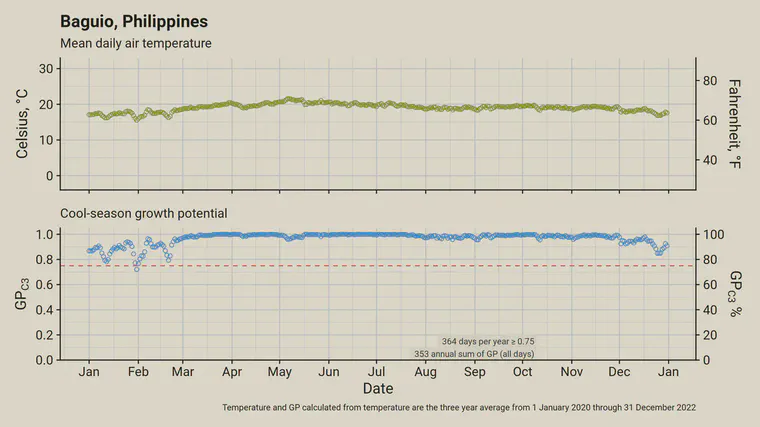
So are the temperatures in the Cameron Highlands of Malaysia, which is another location with 365 days of a high cool-season GP.
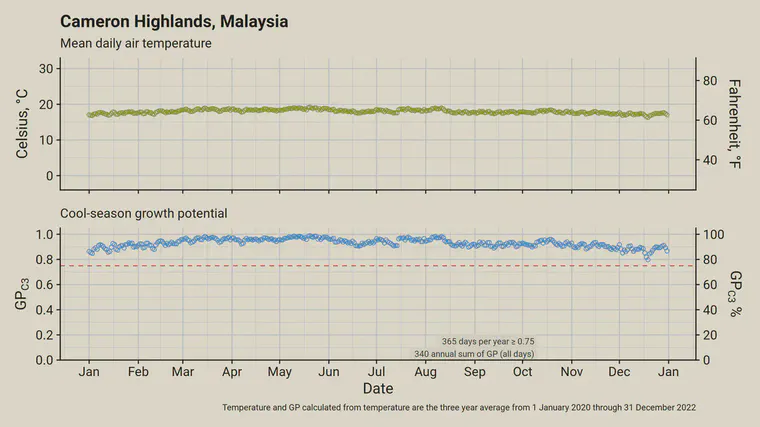
These places exist. They tend to have C4 grasses as turf, for the reasons mentioned previously. The locations are close enough to the equator so that there are minimal changes in air temperature throughout the year. And the locations will be at an elevation that has an average air temperature of about 20 °C all year round.